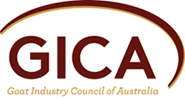Two slow acting, insidious and incurable diseases afflict the goat industry – Caprine Arthritis Encephalitis (CAE) and Johne’s disease (JD). But help is at hand with the National Kid Rearing Plan offering Australian goat producers some actions that can reduce animal suffering, increase production and minimise the spread of infection.
CAE is more virulent, infectious and obvious in young goats than JD. CAE is primarily transmitted through colostrum, contaminated milk, pastures and everyday farming items like overalls, boots and milk buckets. Goats infected with JD or CAE may not show clinical signs until they are quite mature but, if they remain undetected, they can spread the disease throughout the herd.
Animal Health Australia (AHA) and the Goat Industry Council of Australia (GICA) are embarking on a national campaign to encourage goat producers to use the actions in the simple management strategy to help eliminate both diseases from Australian goat herds. The plan is likely to be of most use to producers breeding or managing dairy goats and other intensively run goats.
The National Kid Rearing Plan was developed jointly between GICA (on behalf of the national goat industry) and the state departments of primary industries.The good news for goat producers is that the National Kid Rearing Plan provides one set of simple and cost effective actions that can help mitigate the risks of the two diseases.Goat producers are also encouraged to download a copy of the National Grazing Industries Biosecurity Manual. The Manual covers vital grazing livestock biosecurity practices, which can also help goat producers implement actions to prevent JD and CAE coming onto their properties.
By raising kids in a disease-free environment and undertaking the correct testing procedures for both diseases, goat producers can progressively eliminate the diseases from their herds.When the Plan is backed by good on-farm biosecurity practices, in addition to lifting production, goat producers will receive a higher assurance score on their National Goat Health Statement.
The key steps in the Plan are:
- Separate kids from dams as soon as practical after birth (preferably before they have suckled but no later than two hours) and move to a kid rearing area that is thoroughly cleaned to remove faecal contamination.
- Feed newly born kids on pasteurised colostrum or colostrum from a herd with a current negative CAE and JD herd tested status.
- Rear kids on artificial milk replacer, pasteurised goats milk, or milk from goats in a low risk herd (e.g. a GoatMAP herd or a herd that has a negative tested status).
- Prevent contact with adult goats, sheep, cattle, alpacas and deer, or the pastures they have grazed for at least 12 months.
- Any kid housed on pastures with other livestock can only be in contact with animals that are from: a MAP herd or flock; have a Dairy Score of 7; have a Beef Only or Q Alpaca status; sheep sourced from areas with an audited Regional Biosecurity Plan which includes Ovine Johne’s Disease.
Further information
